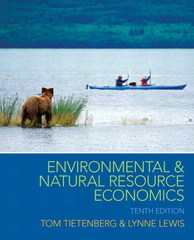Back to Assignment Attempts 0.7 | 1.7 l Keepthe Highest1.7/3 8. Purchasing-power parity Using data from The Economist's Big Mac Index for 2019, the following table shows the local currency price of a Big Mac in several countries as well as the actual exchange rate between each country and the United States. At the time of the data collection, a Big Mac would have cost you $5.74 in the United States and GBP 3.29 in the United Kingdom. The actual exchange rate between the British pound and the U.S. dollar was $1.25 per pound. The dollar price of a Big Mac purchased in the United Kingdom was, therefore, computed as follows: $1.25 GBP 3.29 x GBP 1.00 $4.11 Dollar price of a Big Mac in the United Kingdom For the price you paid for a Big Mac in the United States, you could have purchased a Big Mac in the United Kingdom and had some change left over for fries! Complete the nal column of the table by computing the dollar price of a Big Mac for the countries where this amount is not given. Note: Round your answers to the nearest cent. Big Mac Index: January 2019 Local Price Actual Exchange Rate Dollar Price (Foreign currency) (Dollars per unit of foreign currency) (Dollars) Argentina 120.00 0.02 Norway 42.00 0.12 United Kingdom 3.29 1.25 4.11 Poland 10.80 0.26 2.81 China 21.00 0.14 2.94 Source: "The Big Mac Index, Our Interactive Currency Comparison Tool," The Economist, last modified January 10, 2019, accessed September 27, 2019, https://www.economist.comews/2019/07/10/the-big-mac-index. Purchasing-power parity (PPP) theory states that exchange rates would need to equalize the prices of goods in any two countries. For the dollar price of a Big Mac to be the same in both countries, a U.S. citizen would need to be able to convert $5.74 into exactly GBP 3.29. To find the exchange rate at which hamburger purchasing power is the same in both countries, divide the price in the United States by the price in the United Kingdom: PPP Exchange Rate (U.S. Dollars per British pound) = $5.74 GBP 3.29 = $1.74 per poundPurchasing-power parity (PPP) theory states that exchange rates would need to equalize the prices of goods in any two countries. For the dollar price of a Big Mac to be the same in both countries, a U.S. citizen would need to be able to convert $5.74 into exactly GBP 3.29. To nd the exchange rate at which hamburger purchasing power is the same in both countries, divide the price in the United States by the price in the United Kingdom: PPP Exchange Rate (US. Dollars per British pound) = G313?\" $1.74 per pound The exchange rate that would have equalized the dollar price of a Big Mac in the United States and Argentina (that is, the PPP exchange rate for Big Macs) is V . This change would mean that the peso had V against the dollar. If Big Macs were a durable good that could be costlessly transported between countries, which of the following would present an arbitrage opportunity? Check all that apply. Exporting Big Macs from Argentina to the United States Exporting Big Macs from the United Kingdom to Poland Exporting Big Macs from Norway to China Continue without saving









